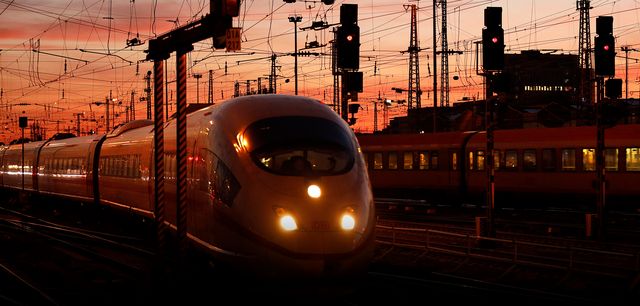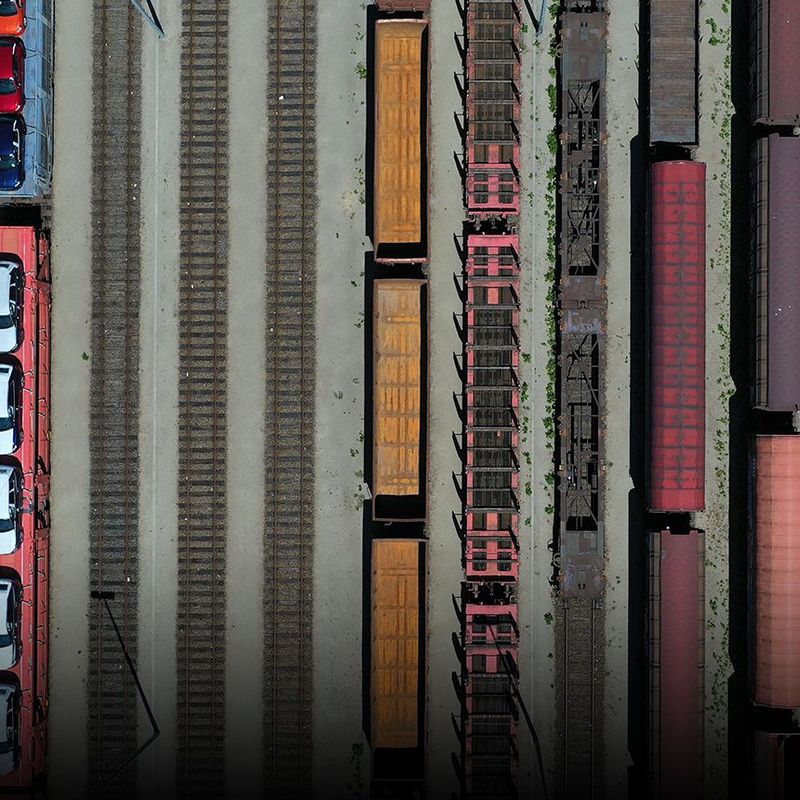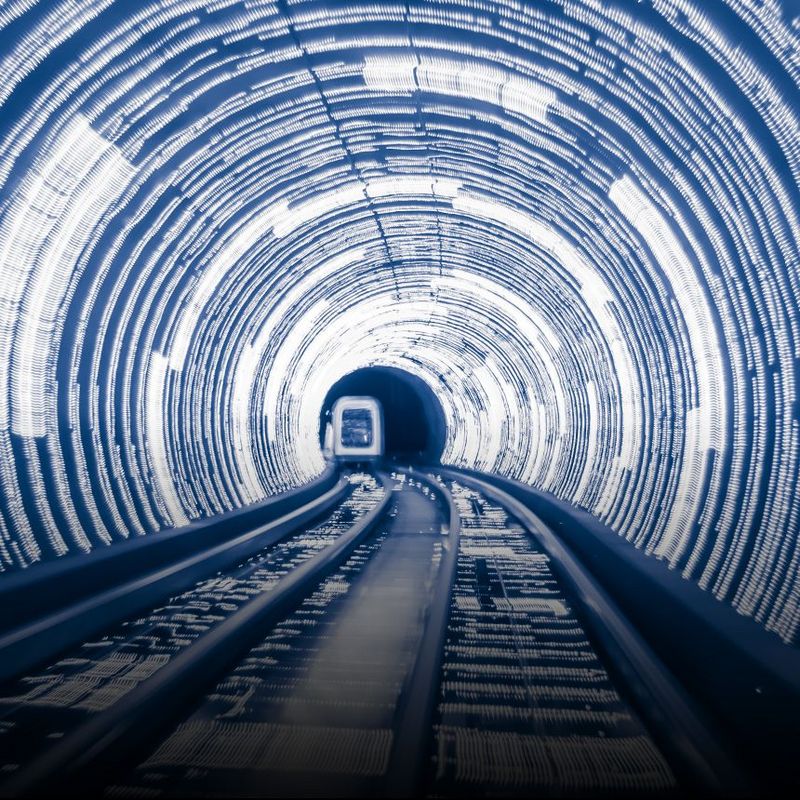30. September 2021
From air to rail: if we really want to halt climate change, then much more traffic will need to shift onto the railways – this is one finding that is shared by all the major political parties. Faster trains which run more often will in the future be taking many more people to their destinations overnight in comfort and in an environmentally friendly manner. How might the journey to better and more comfortable train journeys actually look?
Faster and more comfortable to the destination
In recent years, “flight shaming” has swiftly evolved into a meme with an increasingly politicised meaning. If the EU Commission gets its way, twice as many high-speed trains will be criss-crossing the continent by 2030 than is currently the case, and internal European flights will largely become a thing of the past. The Commission intends to present an action programme to improve rail transport by the end of the year. And the European transport ministers have already given a strong starting signal: at the peak of its success, the “Trans-Europe Express” connected 100 European cities, and the idea is now to revive these fast and direct train connections. To date, 22 European countries have signed a memorandum of understanding for what is known as the TEE 2.0.
The first stage of the project envisages four cross-border connections, to be followed later by a further four. According to these plans, a direct journey from Berlin to Barcelona or from Amsterdam to Rome would take 13 hours. Compared to two hours’ flying time, this is still not exactly a short hop, but it’s a good seven hours less than a passenger on one of these routes will currently need to spend either in trains or at railway stations. And these journeys will in principle all take place from one city centre to another. What’s more, eight sleeper trains will also run on these routes. “Imagine boarding a train in Munich or Berlin in the evening and arriving well rested in Paris or Brussels the following morning,” says German transport minister Andreas Scheuer, plugging a project which is intended to run parallel to the “Deutschlandtakt”, the idea behind which is to connect cities in Germany with trains which run every half an hour and make it possible for passengers to change trains easily and conveniently without having to wait.
Rail expert Christian Böttger from HTW Berlin believes that, although reinforcing cross-border rail traffic is fundamentally a good idea, how the plans are going to be implemented is far from clear. In a first concrete step, Germany, the Czech Republic and Austria have at least agreed on the development of a high-speed line from Berlin to Prague to Vienna, which will in due course become part of the TEE 2.0 project. This will make it possible to travel from Berlin to Vienna in five rather than eight hours – not, however, until the mid-2030s.
© picture allianceThe TEE 2.0 is still a project of the future. Its nostalgic predecessor, a diesel double railcar, connected Munich and Milan between 1957 and 1969.
Austrian trains continue to travel during the night
The TEE 2.0 might well have been inspired by the success of the Austrian Federal Railway company, ÖBB. Where Deutsche Bahn chose to mothball its sleeper trains in 2016, the ÖBB has remained loyal to its night trains, which are, according to its own figures, now turning a profit. 19 Nightjet lines serve the Austrian network; when you count the partner rail services, the number climbs to 28. And demand is growing. Where 1.4 million passengers were carried through the night in 2017, by the following year the figure had jumped to 1.6 million. Passenger numbers continued to increase in 2019, by up to 20 percent depending on the line. Although this represents significant growth as a proportion of the 38 million people transported overall by the ÖBB in 2019, it remains a modest total overall, albeit one which, as the rail operator asserts with confidence, can continue to increase in the coming years.
By mid-decade, the ÖBB intends to have invested an additional 700 million euros in expanding its sleeper train connections and to have doubled the number of passengers. It also intends to introduce a new fleet of Nightjets, starting next year, with the aim of making overnight journeys more comfortable than is possible with the existing fleet of carriages, some of which are now past their best. Other rail operators too have rediscovered the night train. Since June, passengers have been able to embark in Berlin and travel in sleepers via Hamburg to Copenhagen, Malmö and Stockholm. Although Deutsche Bahn does not intend to buy any new sleeper cars, it is nevertheless contributing its seating carriages in collaboration with other rail companies. As of December, two new routes will be added to the timetable. As Commission president Ursula von der Leyen announced, the EU Commission intends for its part to review how to encourage the introduction of new night trains.
© picture allianceThe new Nightjet of the Austrian Federal Railways (ÖBB) intends to show how comfortable journeys from Vienna to Amsterdam can be.
Shifting to rail is a question of price
The potential success of night trains is not least a question of price, as a survey by the environmental organisation Germanwatch has shown. 73 percent of those surveyed think that trains which serve the same routes should be cheaper than flying. In some cases they already are – at least, that is, if you are willing to sleep reclined in your seat for long periods. Tickets for a direct flight from Berlin to Vienna can cost as little as 60 euros. While it is true that you can travel the same route by train for under 40 euros, you will need to factor in a journey time of 8.5 hours. Travelling overnight in a sleeping car will set you back 100 euros; a bed in a twin berth compartment will cost some 150 euros. If you can’t do without with your own toilet and want to shower in private in the morning, you will have to fork out 170 euros.
One thing is clear: The comfort, service and space that you book with a night train ticket come at a price – and this cannot simply be reduced on a whim without sacrificing quality or cutting the salaries of train staff. From the point of view of transport and environmental associations, a key area of flexibility for making rail transport economically viable and tickets more affordable lies in the fees charged for the use of train tracks. And, according to the calculations of the “Agora Energiewende” thinktank, these account for between a quarter and a third of the operating costs of a passenger train. A financial bottleneck, since many international connections run through Germany. This is why initiatives such as “Allianz pro Schiene” are calling for the German government to bear the lion’s share of the maintenance costs for rail transport. This would make it possible to halve the line fees. Not only would this benefit cross-border day and night traffic, but it would also result in a marked improvement of the market conditions for passenger and goods transport in Germany.
Different competitive conditions
One of rail transport expert Böttger’s criticisms is, however, that the shift to rail is also being hampered by unfair competitive conditions. “Air transport is still being heavily subsidised.” Whereas Deutsche Bahn has to pay both tax on the electricity it uses and a levy to the EEC to help fund the energy transition, the airlines are exempt from fuel duty and only have to pay relatively low emissions charges. Moreover, no other form of transport is subject to the kinds of comprehensive passenger rights enjoyed by rail users. For instance, where Deutsche Bahn has to pay compensation to passengers if a train is delayed for one hour, an aircraft can touch down a full three hours after the announced arrival time without further penalties. And where a passenger travelling from Berlin to Vienna has to pay seven percent VAT for the section of the journey within Germany, no VAT is levied on any international flights. “If these cost advantages were to be removed, a short-haul flight would be 50 to 80 euros more expensive,” Böttger estimates. This would allow even a comfortable overnight journey in a sleeper train to close the competitive gap with air travel.
Where the sticking points (still) are in Germany
For the rail transport expert, the night train is just one of the pillars of the rail travel of the future. After all, even with a growing network, train capacities are by definition limited. “A long inter-city train has over 800 seats, in contrast to a night train, which might perhaps be able to accommodate only 200 passengers,” calculates Böttger. And where the inter-city trains run on an hourly basis, the night trains currently run only once a night on their respective routes. This is why he has concluded that more and faster trains are going to be needed in the future.
The project to beef up rail transport on an international scale will stand or fall with the expansion of the railway network in Germany, Böttger says – and this has been moving at a snail’s pace for many years. “We have a massive amount of catching up to do in Germany. And if we’re really serious about shifting transport onto rail, these domestic lines must be our highest priority,” Böttger says. There are many reasons for this delay: alongside complicated planning procedures, the expansion is being held up, as is the case with wind energy, by the ever more heated protests being mounted by people who live close to the tracks. “Civic participation and rights to object are an important part of our democratic system. But we need to think about how these processes might be slimmed down,” Böttger says.
Added to this are staffing bottlenecks and a lack of financial resources. There is a huge mismatch between planned construction projects running to 100 billion euros and a new budget of two billion. “We need a lot more money for the infrastructure and improved planning processes with the setting of clear priorities if we’re actually going to push ahead with the expansion and operation of the railway network in the years to come.” In other words, there’s still plenty to do if we are going to arrive at our destinations comfortably and affordably and in an environmentally friendly way by rail rather than continuing to take to the air.




